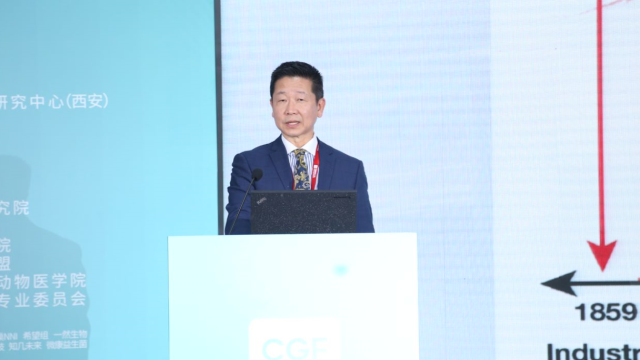mTOR/自噬通路与肠纤维化
Xinjun Zhu
时长:21:53
分会场:2019中国肠道大会 - 整合肠病学大会
Intestinal fibrosis in Crohn’s disease is generally considered to be a progressive and irreversible pathological process that gradually evolves in response to prolonged injury or inflammation. It typically ends with severe complications, including stricture formation and stenosis of the intestine. There is an urgent unmet need to understand the fibrogenic process in Crohn’s disease and develop effective strategies to prevent this irreversible pathology. Interleukin (IL)-22 signaling is part of the adaptive immune response and plays an important role in tissue homeostasis, repair and host defense at barrier surfaces. IL22 primarily participates in growth and proliferation of non-hematopoietic epithelial andconnective tissue cells, including fibroblasts. Thus, there is a strong rationale to clarify the role of IL22 signaling in intestinal fibrosis. We revealed that the mTOR/autophagy pathway regulates the induction of both IL22 and the fibrotic reaction in a mouse model of intestinal fibrosis. Genetic deletion of mTOR in Cx3cr1+ mononuclear cells blocks the induction of IL22 and attenuates intestinal fibrosis, whereas deleting the autophagy gene Atg7 in Cx3cr1+ mononuclear cells enhances expression of IL22 and exacerbates fibrosis. ILC3 and T cells are the major sources of IL22. Interestingly, we found that induction of IL22 and the fibrotic reaction remain intact in Rag-/- mice, suggesting that this fibrosis-promoting cascade can be activated independent of T cells. Finally, we demonstrate that the fibrogenic effect of IL22 involves a synergistic interaction with TGFb signaling by up-regulating the expression of TGFb receptors. This serves as a priming step by which fibroblasts become hyper-fibrotic. Thus, our study reveals a novel pathogenic mechanism that explains the hyper-fibrotic response in patients with inflammatory bowel disease (IBD) who carry mutations in the autophagy pathway. Our findings suggest that the mTOR/autophagy/IL-23/IL-22 axis could be a therapeutic target for alleviation of fibrosis in Crohn’s disease.
Xinjun Zhu, MD, is the Director of the Inflammatory Bowel Diseases (IBD) and is an Associate Professor in the department of Medicine as well as in the department of Molecular and Cellular Physiology at Albany Medical College in NY. Dr. Zhu received her GI fellowship training at John’s Hopkins University under the tutelage of Drs. Theodore Bayless and Mark Donowitz. She then embarked on her independent academic career with focus on IBD practice, research, and clinical trials. She has since been leading an IBD team to serve patients from a large portion of the upstate New York, with emphasis on treating severe form of IBD. Dr. Zhu also maintains a competitive research program funded by National Institute of Health, researchfoundations, and philanthropists. Her primary research interest is to understand how intestinal homeostasis is maintained and how its disruption leads to IBD and comorbidities such as intestinal fibrosis. Her work been disseminated in many premier journals. Dr. Zhu has been serving on FDA Advisory Committee Division of Gastroenterology and Inborn Errors Products since 2012. She was the recipient of “The Osler Latchkey” from Albany Medical College and “the Physician of the Year 2015” from the Upstate Chapter of Cohn’s and Colitis Foundation of America.


